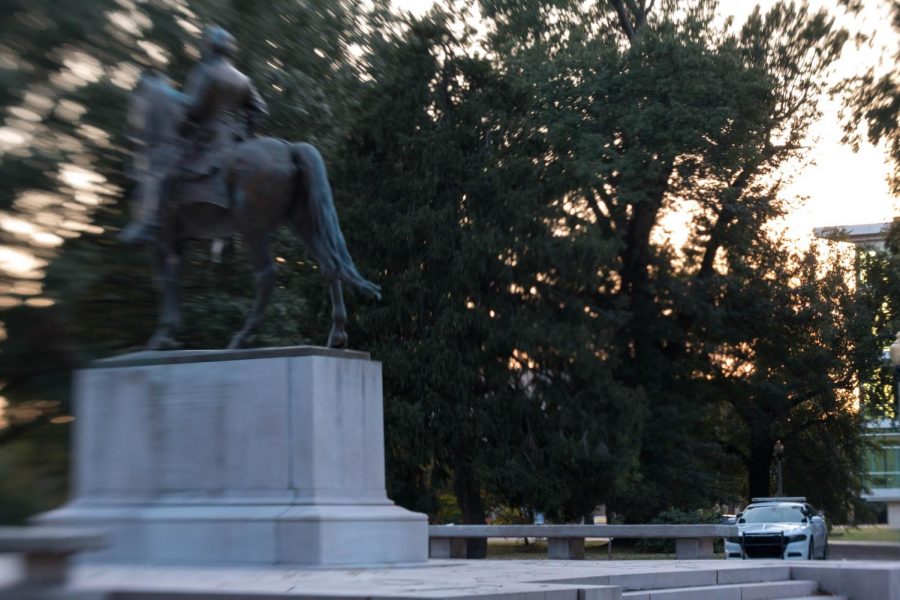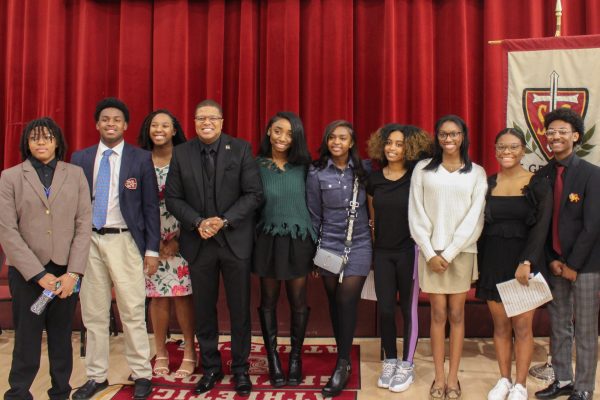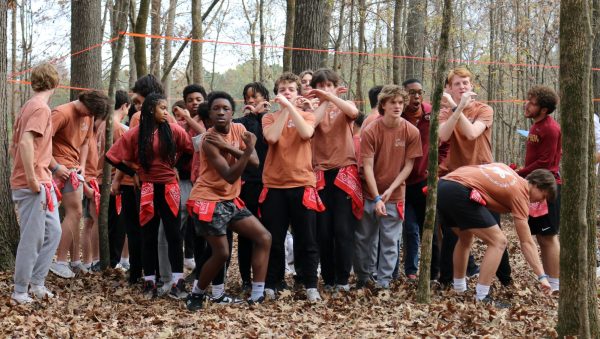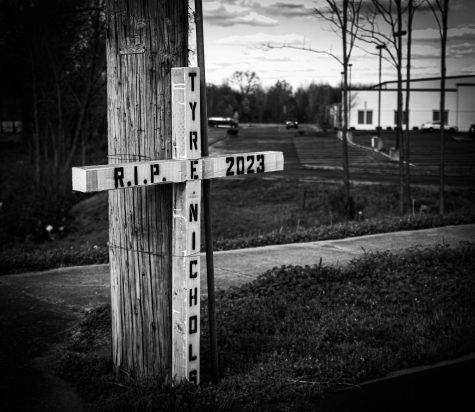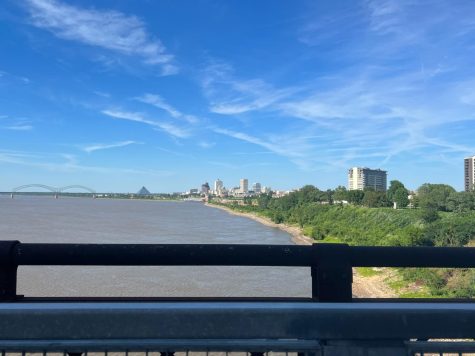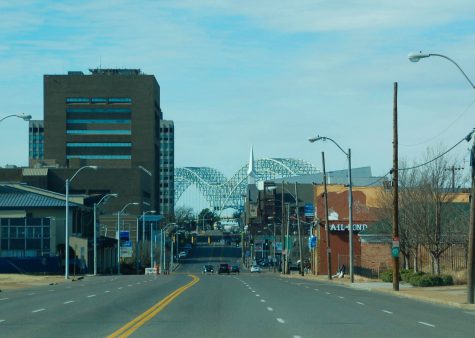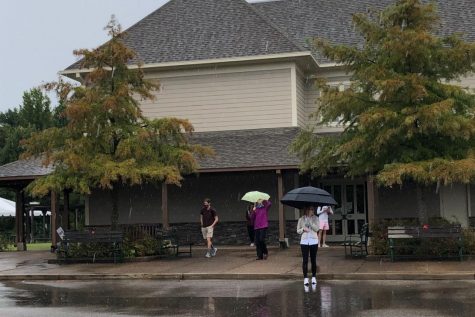Focus of controversy
Memphians debate the removal of Confederate statues
This past August, the “Unite the Right” rally led by white nationalists in Charlottesville,Va. shocked the nation, as protesters violently demonstrated over the removal of a Confederate monument. One person died and several others suffered injuries after one white nationalist’s car plowed through a crowd of counter-protesters.
In response to the deadly clashes in Charlottesville, a group of protesters in Durham, N.C. toppled a Confederate statue themselves, later being charged with two felonies.
These events called attention to a debate over Confederate statues that has been raging in other cities across the country.
A list compiled by the New York Times noted that over 30 cities have removed or are removing their Confederate monuments in the wake of these events, and amongst these cities is our very own Memphis.
Memphis is home to two Confederate statues: the Nathan Bedford Forrest statue in Health Sciences Park and the Jefferson Davis statue in Mississippi River Park.
Nathan Bedford Forrest was a prominent Civil War general, a slave trader and the Ku Klux Klan’s first “Grand Wizard.” The Health Sciences Park was originally named Forrest Park in 1899 to memorialize the Memphis native, and New York designer Charles Henry Niehaus created the statue that was installed over the midtown graves of Forrest and his wife in 1905.
Jefferson Davis Park in downtown Memphis is thought to have been created in 1907 to honor Jefferson Davis, the president of the Confederate States of America. His statue, sculpted by Alto Pera of Italy, was installed in 1964.
Like many Confederate monuments, those in Memphis were not constructed directly after the Civil War, but at times of controversy over civil rights for African-Americans. During the early 1900s when the Forrest statue was erected, Jim Crow laws, established in the wake of Plessy v. Ferguson, significantly restricted the rights of African-Americans and instilled a widespread fear with lynchings. The Davis statue was installed during the controversies of the Civil Rights era and in the same year as the Civil Rights Act.
Unlike statues erected immediately after the Civil War to memorialize the fallen, these statues may have served a darker purpose: to intimidate African-Americans from pursuing greater freedoms.
These statues have been a source of controversy in the city for decades. Protesters first vandalized the Forrest statue in 1984 with references to the Ku Klux Klan, and in 1994, racist epithets were spray-painted on both Confederate statues.
In recent years, calls to have the statues removed have intensified. Several groups have demonstrated against the commission’s decision to preserve the Confederate monuments.
Those associated with the “Take ‘Em Down 901” activist group led by Ms. Tami Sawyer have recently protested outside FedExForum in black clothes, holding signs and staging “die-ins,” where they laid on the plaza pavement. The group has also announced the continuing of demonstrations using their social media hashtag #TakeEmDown901.
Calls for the removal of the statue have been met with widespread agreement in our local government, also.
In 2015, the city council unanimously voted for the removal of the Forrest statue, as well as the remains of Forrest and his wife. Memphis Mayor Jim Strickland, Governor Bill Haslam and other city officials are fierce proponents for the removal of the statue. Yet it remains standing due to the Tennessee Heritage Protection Act and the efforts of the Tennessee Historical Commission.
Passed in 2013 and amended in 2016, the Tennessee Heritage Protection Act “prohibits the removal, relocation, or renaming of a memorial that is, or is located on, public property,” according to the Tennessee Historical Commission’s website. The commission is the State Historic Preservation Office for Tennessee whose main focus is to preserve and maintain historic sites and projects. It is ultimately up to that commission to decide whether or not it will accept a waiver to remove any particular memorial in Tennessee.
The commission consists of 29 members: 24 members are appointed by the governor, and the other five are ex office members, or those who are apart of it by virtue of holding another office. The commission is also authorized to vote on new laws when necessary, and they play a significant role in the debate to remove the Confederate monuments in Memphis.
According the Commercial Appeal, the 29-member commission includes several supporters of the Sons of Confederate Veterans (SCV), who are significant opponents of the statue’s removal.
In public statements, the SCV have expressed their concern that the country is eradicating “all things Confederate,” and although Tom Strain, the commander-in-chief of the group, did not respond to the Lodge’s request for comment about the matter in Memphis specifically, Mr. Douglass Jones, a representative for the group, spoke recently with the Commercial Appeal. Jones said that the five living heirs of Forrest were opposed to moving the statue and that the statue itself does not represent racism.
“The statue is the headstone, the marker for the two graves…You don’t touch headstones, you don’t bother them,” Mr. Jones said.
The United Daughters of Confederacy President General Mrs. George W. Bryson recently provided a statement on the nationwide removal of statues, assuring readers that the group is not affiliated with those that promote racism or white supremacy in preserving the statues. The group hopes that the nation and its citizens “will continue to let its fellow Americans, the descendants of Confederate soldiers, honor the memory of their ancestors.”
Those supporting the removal of the statues see them as having purpose beyond honoring ancestors who fought in the Civil War and remain unpersuaded by arguments that taking them down is erasing history.
In an interview over email with the Lodge, University of Memphis History Professor Aram Goudsouzian argued that statues in public places are not necessary for preserving history.
“The stupidest argument against the removal of the statues is that they are ‘erasing history’,” Professor Goudsouzian wrote. “No one is denying that Nathan B. Forrest or Jefferson Davis was a significant figure. Historians will continue to analyze them and explain their historical impact. But a statue is not an educational tool it is a symbol of what a community deems honorable and valuable. Those statues do not represent our city’s values.”
Memphis City Councilman Martavious Jones has a similar outlook and was one of the councilmembers who made remarks during an August meeting at City Hall debating the removal. In a phone interview with The Lodge, he questioned the logic of preserving the statues.
“The question that I would ask [the SCV] is, should we have a memorial for Osama Bin Laden? Because he took up arms against the United States much like the Confederate States of America,” Councilman Jones said. “Who you choose to honor sends a message to the rest of the world. What message do we want to send by honoring people whose bad deeds outweigh their good deeds? Nobody is perfect, but do we honor figures whose bad deeds overshadow their good deeds?”
Councilman Jones also said that it is more complicated to protect the statues in Memphis than to remove them, as protesters will likely continue to vandalize them.
“There is verbiage in the [Tennessee Heritage Protection Act] that charges we, the city of Memphis, are ‘to accept responsibility of maintaining a memorial, and we shall have the authority to take the proper and appropriate measures in emphasizing the appropriate and proper means for the care, preservation, protection, repair, and restoration of the memorials’,” he said. “If the memorial remains there in its current form, you can have vandals come by and spray paint it with graffiti, and we have to keep repairing it and restoring it.”
Some, like Councilman Jones, have also pointed out that protecting the statues is costly for the city. According to a report from the Memphis Police Department, the city spent $16,530 on overtime for monitoring rallies and also spent an additional $8,796 in regular pay for officers at the parks, which brings the city’s total cost of patrolling the parks to over $25,000.
In 2016, the city council first applied to the Tennessee Historical Commission for a waiver to remove the statues, but it was denied. Following an additional denial in 2017, the council voted unanimously in favor of an ordinance for the immediate removal of the statues. However, without state approval, this cannot be done. It was decided that they would have a plan by Nov. 21 to remove them.
When reached out to by the Lodge, Mayor Strickland agreed to comment on the matter once it was resolved.
Mayor Strickland has formed a coalition of over 170 religious leaders that have shared their support for the removal of the statues. Amongst these leaders is Pastor Chris Conlee*, the lead pastor of Highpoint Church and an executive team member of the Memphis Christian Pastors Network. Pastor Conlee works with other pastors to promote outreach in the greater Memphis area.
“We’re coming together to say, ‘How can we unify as pastors, and how can we unify as churches when it comes to racial issues?’” Pastor Conlee said. “When we think about these monuments, the monuments that are not just in Memphis but around the country, and if you study when they were erected, they were built at a time to combat civil rights. Those statues are a reminder of our nation’s dark past, and removing them will promote the peace we seek among our community and put that sensitive part of the past behind us.”
The Tennessee Historical Commission has delayed the next meeting with the city council until February, meaning that the statues could remain standing into 2018.
Since 2015, several cities have removed their Confederate statues, including Austin, New Orleans, St. Louis, Orlando, Durham, San Diego, Los Angeles, Brooklyn, Baltimore, The Bronx and Kansas City.
It remains to be seen if Memphis will join them.
*Full disclosure: Pastor Chris Conlee is father of Editorial Board Member Annika Conlee.


